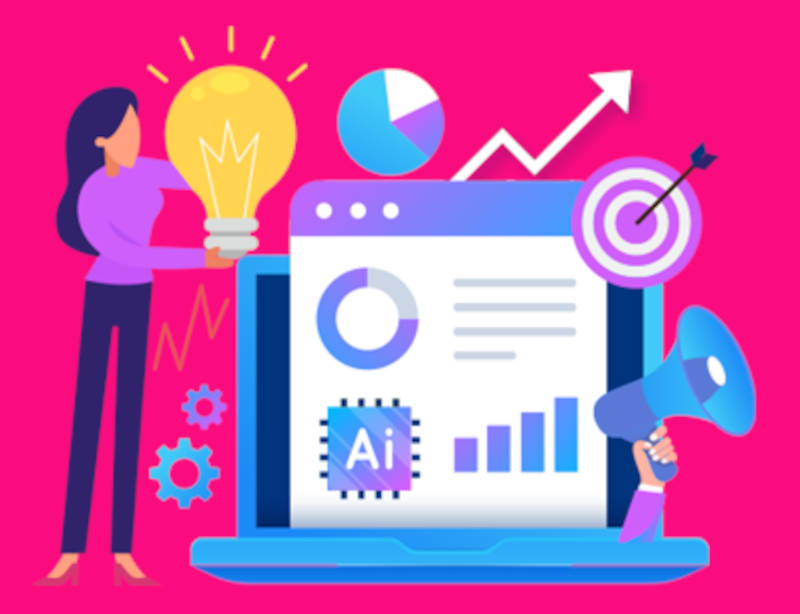Email Marketing
How To Create A Marketing Plan For Your Website
AI: Your Ultimate Marketing Power Tool
AI is one of the most powerful tools in modern marketing. It can make your efforts faster, more affordable, and highly effective. This guide shows you how to use AI to boost your website’s marketing strategy, from driving traffic to increasing conversions!
Let’s Get Started!
Step 1: Set Clear Goals
Before exploring AI tools, start with the basics: What’s your main goal? Knowing this will help guide every decision.
Here are some common goals:
- Increase website traffic: Get more visitors to your site.
- Boost conversions: Turn more visitors into customers or subscribers.
- Improve engagement: Keep visitors on your site longer.
- Enhance brand awareness: Make your brand more recognizable.
- Generate more leads: Collect contact information from potential customers.
Pro Tip: Don’t tackle everything at once. Start with one or two goals.
Once you have your goals, make them SMART:
- Specific: Clearly define your goal (e.g., “Increase organic traffic by 50%”).
- Measurable: Ensure you can track your progress.
- Achievable: Set realistic goals.
- Relevant: Align with your overall business objectives.
- Time-bound: Set a deadline, like “increase conversions by 25% in 6 months.”
By defining your goals, you’re setting AI up to perform effectively.
Step 2: Choose the Right Tools
With many AI tools out there, it’s essential to choose the right ones for your needs. Here’s a look at some top options:
- ClickFunnels – For building sales funnels.
- Jasper – For blog content creation.
- Copy.ai – For creating copywriting content.
- Seventh Sense – For email marketing optimization.
- Lately – For repurposing content into social media posts.
- Brandwatch – For monitoring customer sentiment.
- Emarsys – For personalized marketing.
- Acquisio – For managing PPC campaigns.
- MarketMuse – For improving SEO.
- Drift – For chatbot-driven sales.
- Intercom – For customer support.
- Animoto – For creating videos quickly and easily.
Each tool has unique features designed to optimize specific aspects of your marketing strategy.
Step 3: Implement Quality Control
AI can turbocharge your marketing efforts, but it’s not foolproof. Human oversight is critical for maintaining quality.
Here’s why it matters:
- Brand consistency: AI might miss your brand’s unique voice.
- Context understanding: AI can overlook cultural nuances.
- Accuracy: AI sometimes produces factual errors.
- Ethics: Human judgment ensures ethical alignment.
Tips for Quality Control:
- Set style guidelines for consistency.
- Use a tiered review process based on content risk.
- Leverage AI editing tools for efficiency.
- Conduct regular content audits.
- Encourage collaboration between humans and AI.
The goal isn’t to micromanage AI but to ensure it aligns with your brand values.
Step 4: Analyze, Adapt, and Optimize
Now that your AI strategy is in action, it’s time to track and adjust to maximize effectiveness.
- Set Up Analytics: Use tools like Google Analytics to track performance.
- Identify Key Metrics: Focus on metrics like engagement and conversion rates.
- A/B Test with AI Content: Compare AI and human-generated content.
- Interpret Data: Look for patterns to inform strategy.
- Refine AI Prompts: Use data to improve AI-generated content.
- Balance Automation with Creativity: Reserve space for creative, non-AI initiatives.
- Stay Agile: Keep up with AI developments and adjust as needed.
Final Thoughts on AI in Marketing
AI offers incredible possibilities in marketing. However, your creativity and strategy remain invaluable. Integrating AI is an ongoing journey, and as you master these tools, you’ll stay at the forefront of marketing innovation.
Welcome to a smarter marketing future!
>>>Join The One Funnel Away Challenge<<<






























